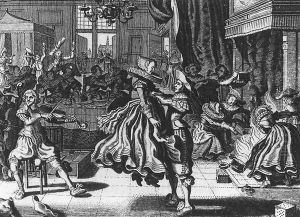Gillis Quintijn Paintings
Gillis Quintijn was a Flemish painter and draftsman who was born in 1605. While there is a scarcity of detailed information about his life and career, it is known that he was active during the early to mid-17th century, a period that was marked by the flourishing of Flemish art, particularly in the wake of the careers of Peter Paul Rubens and Anthony van Dyck. Quintijn's work is less documented than that of his contemporaries, and as a result, he remains a somewhat obscure figure in art history.
Quintijn's artistic contributions are primarily associated with the Baroque period, which was characterized by its dramatic expression, rich, deep color, and emphasis on movement and contrast. His style would have been influenced by the major artists of the time, and it is likely that he produced works that reflected the socio-political and religious contexts of the era, such as the Counter-Reformation, which had a significant impact on the arts in the Southern Netherlands.
There are few records of specific works attributed to Gillis Quintijn, which makes it challenging for art historians to construct a comprehensive understanding of his oeuvre. Nevertheless, artists like Quintijn played a role in the broader tapestry of Flemish art, contributing to the collective output that defined the visual culture of the region during the 17th century.
Quintijn's death occurred in 1645, at the age of 40. The cause of his death, much like many details of his life, is not well documented. Despite his relative obscurity, Gillis Quintijn's existence is a reminder of the numerous lesser-known artists who were part of the vibrant artistic communities in Europe during the Baroque period. Their lives and works may not all have been recorded in great detail, but they collectively contributed to the rich artistic heritage of their time.
